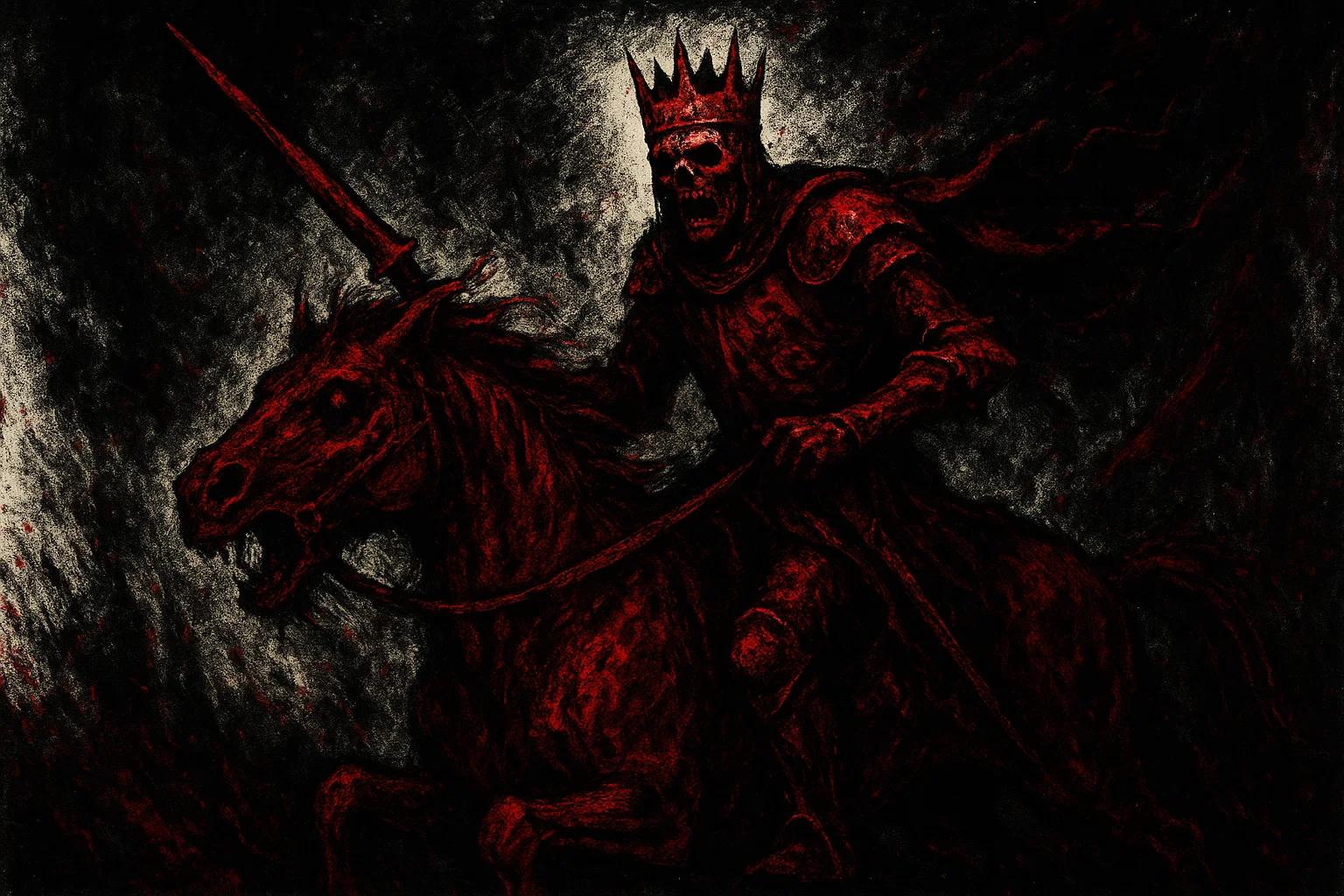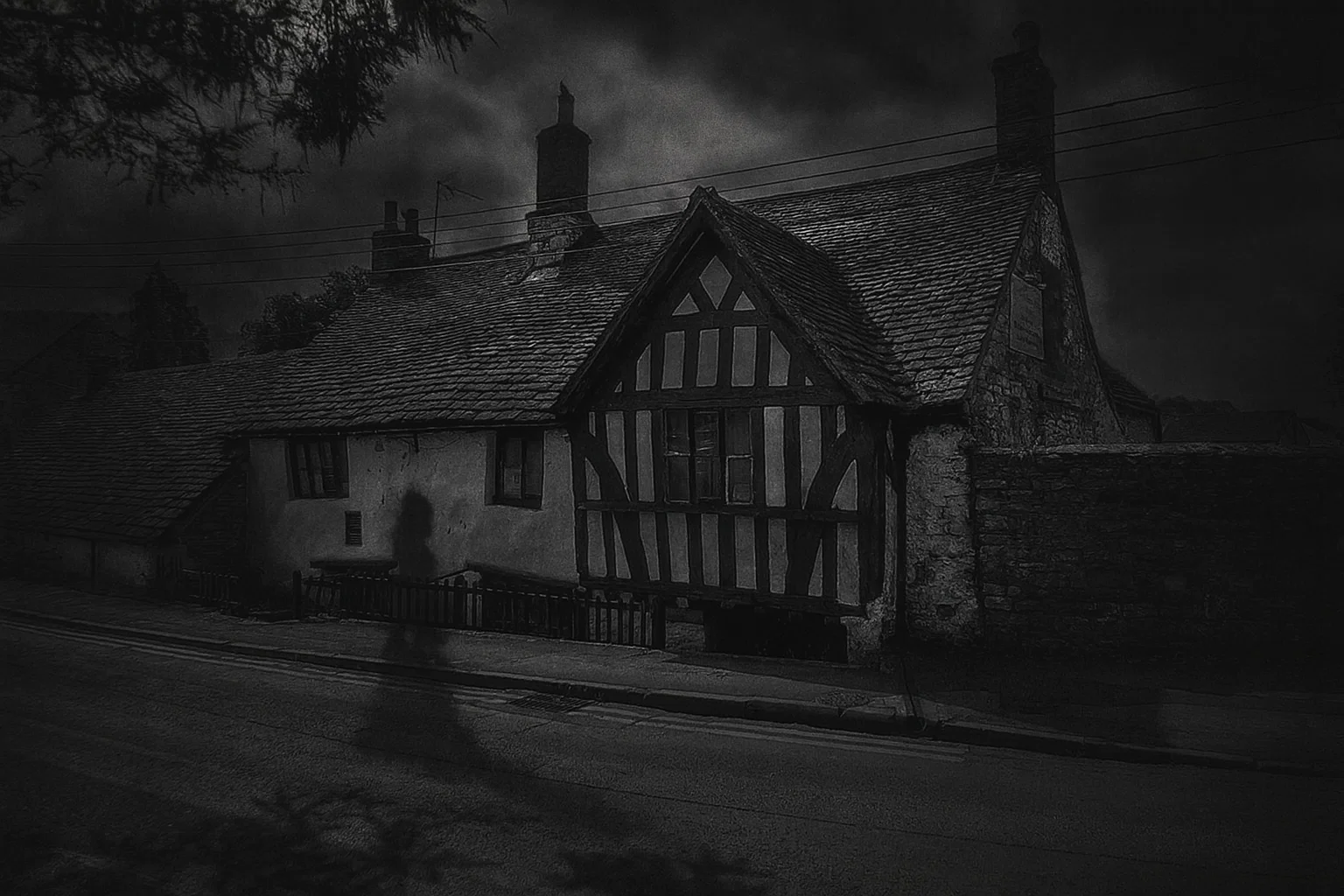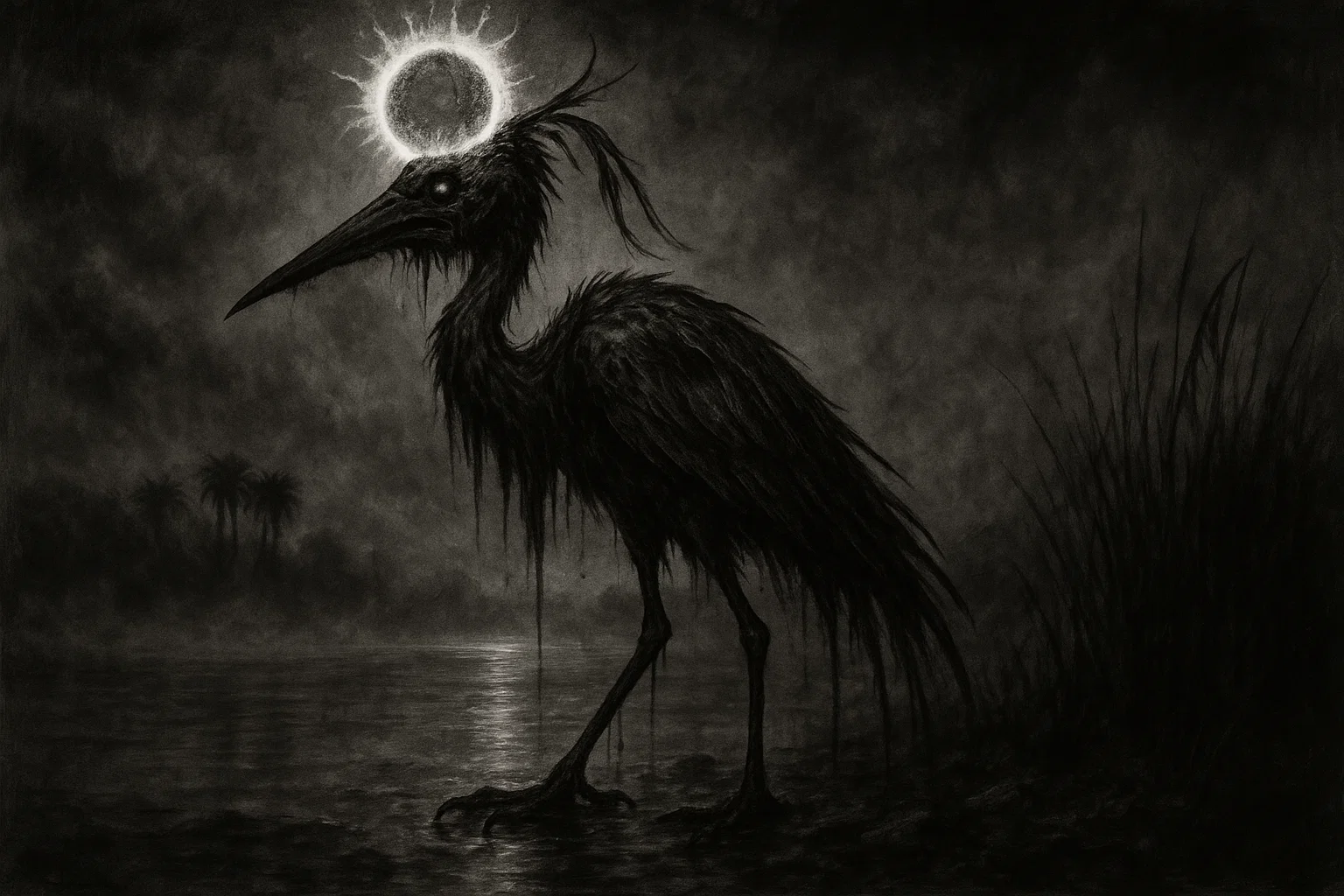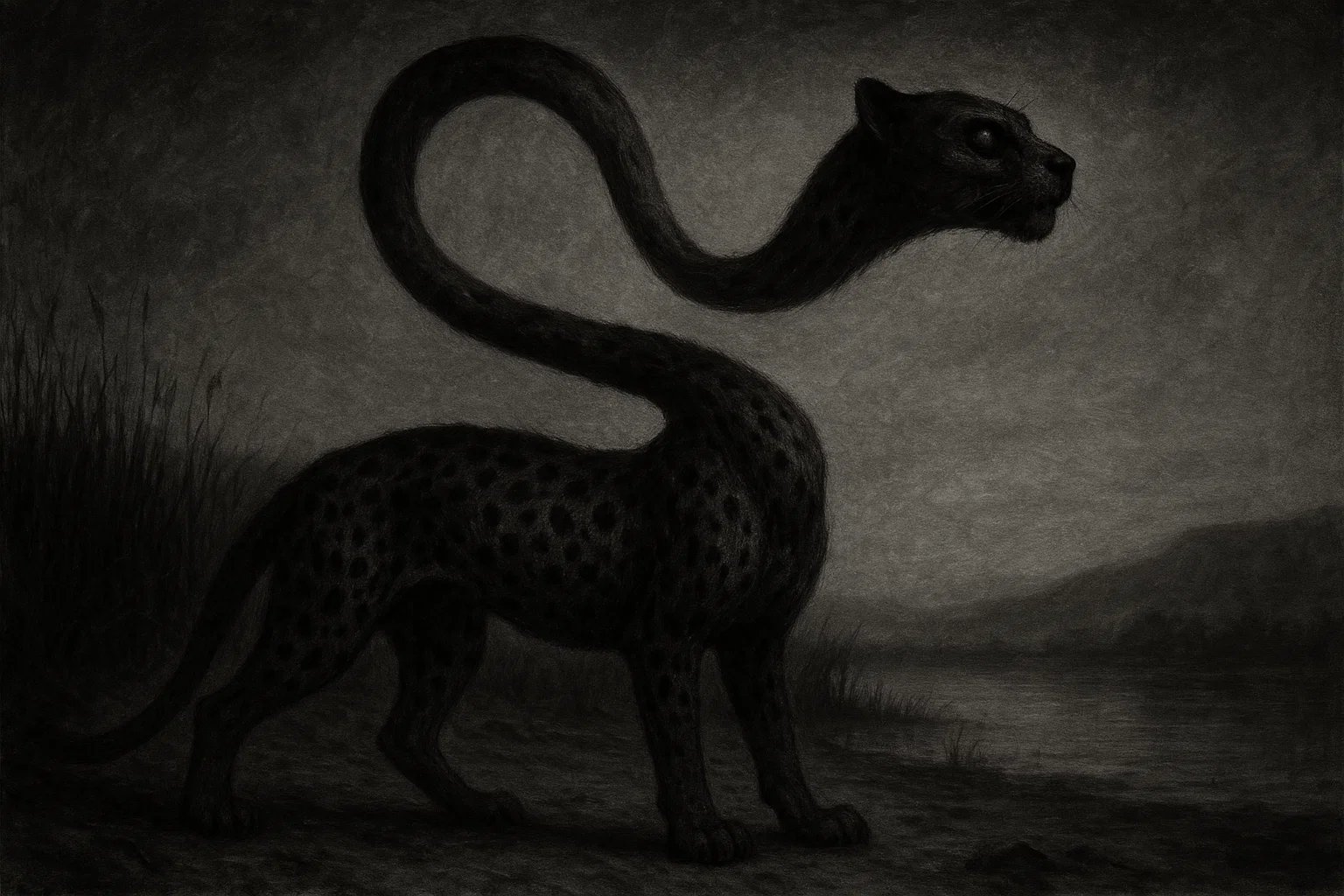Berith, a demon whose fiery presence and alchemical prowess have captivated occult enthusiasts for centuries. Known as Beirith, Beal, or Bolfry, this Great Duke of Hell commands 26 legions of demons and holds secrets to wealth, truth, and power.
With roots in ancient grimoires like the Ars Goetia and ties to biblical deities, Berith blends martial might with cunning deception.
This in-depth article explores his etymology, historical mentions, appearance, powers, role in Hell’s hierarchy, astrological ties, and cultural impact. Perfect for those intrigued by demonology or the supernatural, this guide unveils the mysteries of a demon who promises gold but demands caution.
Summary
Key Information
The following table summarizes Berith’s essential attributes:
| Attribute | Details |
|---|---|
| Name | Berith, Beirith, Beal, Beale, Beall, Bofi, Bolfry, Bolfri |
| Title | Great Duke of Hell, Terrible Duke |
| Gender | Male |
| Hierarchy | Duke, 28th spirit in the Ars Goetia |
| Servitors | 26 legions of demons |
| Powers | Divination (past, present, future), transmutation of metals into gold, conferring dignities, deception |
| Appearance | Soldier in red apparel, riding a red horse, wearing a golden crown, sometimes with a sword or lance |
| Etymology | Likely from Hebrew berit (“covenant”); possibly linked to Baal-Berith |
| Associated Figures | King Solomon, Baal-Berith, alchemists, Lucifer, Satan |
| Role | Alchemical master, deceiver, granter of honors, manipulator of truth |
| Symbolism | Alchemy, deception, nobility, war, fire, wealth |
| Weaknesses | Lies unless constrained by divine power or a magical ring |
| Superior Demon | Likely Lucifer or Satan |
| Opposing Angel/Saint | Not specified; possibly Michael or Raphael |
| Equipment/Tools | Red horse, golden crown, magical ring (for summoning), sword or lance |
| Pantheon | Abrahamic demonology, with possible Canaanite roots |
Etymology
The name Berith likely derives from the Hebrew word berit, meaning “covenant” or “alliance.” This suggests Berith’s role in forming pacts with summoners, a common practice in demonology where demons offer services for loyalty or offerings.
The term berit appears in the Hebrew Bible to denote sacred agreements, such as God’s covenant with Israel, making Berith’s name ironic given his deceptive nature.
Alternatively, Berith may be linked to Baal-Berith, a Canaanite deity worshipped in Shechem, as mentioned in Judges 8:33 and 9:4 (circa 1000–600 BCE). Baal-Berith, meaning “Lord of the Covenant,” was a god of alliances, possibly demonized in Jewish and Christian traditions to become the demon Berith.
Variations like Beal, Bofi, or Bolfry reflect phonetic shifts in grimoires, with Beal possibly tied to Baal (Canaanite for “lord”) and Bolfry a necromancer’s term, as noted in the Pseudomonarchia Daemonum (1577).
Some scholars speculate a connection to beryl, a gemstone associated with wealth, aligning with Berith’s alchemical powers, though this is less substantiated. These linguistic threads highlight Berith’s transformation from a deity to a demon of deceit and power.
Historical and Mythological Background
Berith’s legacy in demonology is rooted in Renaissance grimoires, with possible origins in ancient Canaanite religion. As a Great Duke of Hell, he appears prominently in texts like the Ars Goetia and Pseudomonarchia Daemonum, where his powers of divination, alchemy, and granting dignities make him a sought-after entity.
You May Also Like: Lucas Tavern Haunting: Montgomery’s Oldest Building Has a Ghost Problem
While Berith lacks the extensive mythological narratives of demons like Beelzebub or Belial, his stories and roles in occult traditions reveal a complex figure tied to human ambition and supernatural deceit.
Biblical and Canaanite Roots
Berith’s origins may trace to Baal-Berith, a Canaanite deity worshipped in Shechem, as described in the Hebrew Bible. In Judges 8:33 (circa 1000–600 BCE), after the death of Gideon (circa 1150 BCE), the Israelites “went a whoring after the Baals, and made Baal-Berith their god.”
This deity, whose name means “Lord of the Covenant,” was associated with alliances and communal agreements. In Judges 9:4, Abimelech, Gideon’s son, uses 70 shekels from Baal-Berith’s temple to hire mercenaries, seizing power and sparking civil strife.
The worship of Baal-Berith represented a betrayal of Israel’s covenant with God, leading to his demonization in Jewish and Christian traditions. By the medieval period, Baal-Berith likely merged with Berith, transforming a god of pacts into a demon who deceives summoners with false promises.
Renaissance Demonology
Berith’s most detailed descriptions appear in Renaissance grimoires. In Johann Weyer’s Pseudomonarchia Daemonum (1577), Berith is a Great Duke who appears as a red-clad soldier on a red horse, crowned with gold.
He answers questions about the past, present, and future, transmutes metals into gold, and grants dignities, but is a notorious liar unless constrained.
The Ars Goetia (circa 1650), part of the Lesser Key of Solomon, echoes this, adding that summoners must use a magical ring—similar to that used for Beleth—to compel truth.
These texts, compiled during a time of fascination with alchemy and occult knowledge, position Berith as a patron of wealth and power, appealing to those seeking to transcend mortal limits.
Legends and Stories
While Berith lacks extensive standalone myths, several legends and anecdotes highlight his role in demonology:
- King Solomon’s Binding: In the Testament of Solomon (circa 1st–5th century CE), King Solomon binds 72 demons using a magical ring from Archangel Michael. Though Berith is not explicitly named, later traditions, such as those in the Ars Goetia, suggest he was among them. In one apocryphal tale, Solomon summons Berith to reveal the location of hidden gold in Jerusalem. Berith complies but attempts to deceive Solomon by leading him to fool’s gold. Solomon’s wisdom and the ring’s power force Berith to reveal the truth, showcasing his deceptive nature.
- The Alchemist’s Pact: A medieval legend, recounted in occult folklore, tells of an alchemist in 15th-century Prague who invoked Berith to master transmutation. Berith appeared in his fiery splendor, promising to turn lead into gold. The alchemist, unaware of Berith’s deceit, followed his instructions but produced only brittle alloys. When the alchemist used a consecrated ring inscribed with divine names, Berith relented, granting true gold but demanding a heavy price—allegedly the alchemist’s loyalty to Hell. This story underscores Berith’s alchemical allure and the risks of summoning him.
- The False Oracle: In a 16th-century tale from European occult circles, a nobleman sought Berith’s divination to predict a war’s outcome. Berith appeared on his red horse, prophesying victory, but his words were lies, leading to the nobleman’s defeat. Only when a priest intervened with prayers to Archangel Raphael did Berith confess his deceit, revealing the true outcome. This narrative highlights Berith’s role as a manipulator of truth.
- The Shechem Betrayal: Drawing from Judges 9, some Christian theologians linked Baal-Berith’s influence to Berith’s demonic actions. In this story, Berith inspires Abimelech’s treachery, whispering promises of kingship. Abimelech’s violent reign and eventual death in battle (circa 1120 BCE) are seen as Berith’s punishment for his followers’ idolatry, reinforcing his role as a deceiver who betrays even his devotees.
Encounters with Other Figures
Berith’s myths often involve interactions with divine or human figures:
- Archangel Michael or Raphael: In occult traditions, Michael or Raphael opposes Berith, countering his lies with divine truth. In the alchemist’s tale, Raphael’s intervention ensures Berith’s honesty, reflecting angelic authority over demons.
- Lucifer or Satan: As a duke, Berith likely serves under Lucifer or Satan in Hell’s hierarchy, executing their plans to tempt humanity with wealth and power.
- Alchemists and Occultists: During the Renaissance, alchemists like Paracelsus (1493–1541) may have invoked Berith for his transmutation powers, though no direct records confirm this. His appeal to those seeking gold reflects the era’s alchemical fervor.
Historical Mentions
The table below lists key texts mentioning Berith:
| Text/Grimoire | Year | Description | Excerpt |
|---|---|---|---|
| Pseudomonarchia Daemonum | 1577 | Berith as a great duke, appearing as a red soldier on a red horse, lying unless constrained | “Berith is a great and a terrible duke, and hath three names. Of some he is called Beall; of the Jewes Berithi; of Nigromancers Bolfry: he commeth foorth as a red souldier with red clothing, and upon a horsse of that colour, and a crowne on his head. He answereth truelie of things present, past, and to come. He turneth all metals into gold, he adorneth a man with dignities, and confirmeth them. He speaketh with a cleare and subtill voice, and twentie six legions are under him.” |
| Ars Goetia | ~1650 | Berith as the 28th spirit, with similar powers, requiring a magical ring | “The Twenty-eighth Spirit in order, as Solomon bound them, is named Berith. He is a Mighty, Great, and Terrible Duke. He hath two other Names given unto him by men of later times, viz.: BEALE, or BEAL, and BOFRY or BOLFRY. He appeareth in the Form of a Soldier with Red Clothing, riding upon a Red Horse, and having a Crown of Gold upon his head. He giveth true answers, Past, Present, and to Come. Thou must make use of a Ring in calling him forth, as is before spoken of regarding Beleth. He can turn all metals into Gold. He can give Dignities, and can confirm them unto Man. He speaketh with a very clear and subtle Voice. He is a Great Liar, and will not tell the Truth unless constrained by Divine Power. He governeth 26 Legions of Spirits.” |
What Berith Looks Like
Berith’s appearance is vivid and martial, designed to inspire awe and fear. In the Ars Goetia and Pseudomonarchia Daemonum, he manifests as a soldier clad in red apparel, riding a red horse, and wearing a golden crown.
The red attire, possibly a tunic or armor, symbolizes blood, war, or fiery passion, while the red horse—strong and majestic—enhances his commanding presence.
The golden crown, gleaming with authority, marks his ducal rank, distinguishing him from lesser demons. Some depictions add a sword or lance, emphasizing his warrior nature.
You May Also Like: The SS Ourang Medan’s Last Call | Horror Story
His face is described as stern, with piercing eyes that convey both nobility and menace. The Ars Goetia notes his clear and subtle voice, which can be soothing yet deceptive, luring summoners into false trust.
In occult art, Berith may appear with fiery accents, such as glowing eyes or a flaming aura, reflecting his alchemical and destructive powers. This striking image makes Berith a formidable figure in demonology.
Powers and Abilities
Berith wields a unique set of powers that blend divination, alchemy, and social influence, setting him apart from demons with broader destructive abilities:
- Divination: Berith reveals truths about the past, present, and future, offering insights into hidden events or outcomes. However, he is a great liar and will deceive unless constrained by divine power or a magical ring, as noted in the Ars Goetia. This makes his divination both valuable and risky.
- Transmutation: He can transform all metals into gold, a coveted alchemical skill. This power appeals to those seeking wealth, reflecting Berith’s role as a patron of material gain.
- Conferring Dignities: Berith grants honors, titles, or social status, influencing political and social hierarchies. He can confirm these dignities, ensuring their legitimacy, which attracts ambitious summoners.
- Deception: His propensity for lying, unless ritually controlled, is a core ability, making him a master manipulator who tests the summoner’s skill and faith.
These powers align with Renaissance desires for knowledge, wealth, and power, but Berith’s deceitful nature requires summoners to use precise rituals, such as invoking divine names or wearing a consecrated ring, to ensure his cooperation.
Role in the Hierarchy of Hell
As a Great Duke of Hell and the 28th spirit in the Ars Goetia, Berith holds a significant position in the hierarchy of Hell. Dukes rank below kings and princes but wield considerable authority, overseeing legions of lesser demons.
With 26 legions under his command—each legion potentially numbering thousands—Berith controls a vast demonic force. His role likely involves executing Hell’s plans to tempt humanity with wealth, status, and forbidden knowledge.
You May Also Like: Who Is Akesoli: The Pain-Bringer Demon of Amaimon’s Court?
In the Pseudomonarchia Daemonum, Berith operates under higher demons like Lucifer or Satan, though no specific superior is named. His focus on alchemy and divination suggests he serves as a specialist, aiding Hell’s broader schemes by manipulating earthly affairs.
The requirement of a magical ring for summoning indicates his high status, as only powerful demons demand such elaborate rituals.
Astrological Associations and Symbolism
Berith’s astrological associations are not explicitly detailed in grimoires, but his attributes suggest connections to celestial and elemental forces. In occult traditions, demons are often linked to planets or zodiac signs, and Berith’s powers align with Mercury, the planet of communication, intellect, and alchemy.
His deceptive nature and subtle voice echo Mercury’s trickster qualities, while his transmutation abilities reflect the planet’s association with transformation. Alternatively, his fiery red appearance and martial imagery suggest Mars, symbolizing war and aggression.
Elementally, Berith is tied to fire, represented by his red attire, horse, and alchemical powers, which evoke transformation and destruction. His golden crown and ability to grant dignities symbolize nobility and wealth, aligning with solar or Jupiterian influences.
In some modern interpretations, the 72 demons of the Ars Goetia are mapped to the 36 zodiacal decans (10-degree segments), but Berith’s specific decan is unclear, possibly falling under Sagittarius or Capricorn due to his position as the 28th spirit.
Symbolically, Berith embodies alchemy (transformation), deception (hidden truths), nobility (crown and dignities), and war (soldier imagery). His red horse and attire signify passion, danger, and power, while his lying nature warns of the perils of unchecked ambition.
Sigil
Berith’s sigil, as depicted in the Ars Goetia, is a unique geometric glyph used in summoning rituals. Composed of sharp angles, curves, and intersecting lines, it serves as his spiritual signature, channeling his energy.
Summoners draw the sigil on parchment or engrave it on a lamin (pendant), often within a magical circle alongside a triangle of art to contain Berith. The ritual requires a silver ring inscribed with divine names, held to the face, to compel truth and protect against deception.
The sigil’s intricate design reflects Berith’s complex nature, and its use demands precision to avoid his wrath or lies.
Media and Pop Culture
Berith has a modest but notable presence in pop culture, primarily in media inspired by demonology:
- Video Games: In the Shin Megami Tensei series (1992–present), Berith is a recurring demon, depicted as a fiery knight with alchemical abilities, often aligned with fire or strength attributes. In Persona 5 (2016), he appears as a persona with similar traits.
- Literature: Berith is mentioned in occult-themed novels, such as those by Dennis Wheatley, where grimoires and demon summoning feature prominently.
- Tabletop Games: In Dungeons & Dragons and Pathfinder, Berith occasionally appears in demonology-inspired lore, though less prominently than archdevils.
Given his niche presence, Berith’s cultural impact is limited compared to demons like Beelzebub, but his appearances highlight his alchemical and martial allure.
You May Also Like: Lizard Man of Lee County Cryptid: Sightings, Tracks, and Legends
Comparison to Other Demons
The table below compares Berith with other demons from the Ars Goetia:
| Demon Name | Rank | Primary Powers | Appearance | Associated Symbols |
|---|---|---|---|---|
| Agares | Duke | Teaches languages, causes earthquakes | Old man on crocodile with hawk | Earthquakes, languages |
| Valefor | Duke | Tempts to steal | Lion with donkey’s head | Theft, loyalty |
| Barbatos | Duke | Understands animal speech, reconciles friends | Archer in green | Animals, friendship |
| Gusion | Duke | Divination, reconciles friendships | Xenophilus (unknown form) | Divination, friendship |
| Eligos | Duke | Discovers hidden things, knows wars | Knight with lance and standard | War, discovery |
| Zepar | Duke | Causes love between men and women | Soldier in red | Love, passion |
| Bathin | Duke | Knows herbs and stones, transports suddenly | Strong man with serpent tail | Travel, knowledge |
| Sallos | Duke | Causes love between men and women | Soldier with ducal crown on griffin | Love, nobility |
| Aim | Duke | Sets cities on fire, makes witty | Three-headed man on viper | Fire, wit |
Berith’s alchemical transmutation and deceptive divination distinguish him from Zepar’s love inducement or Eligos’s war foresight, emphasizing wealth and manipulation.
Conclusion
Berith, the Great Duke of Hell, remains a compelling figure in demonology, blending martial grandeur with alchemical mastery. From his possible roots as Baal-Berith to his prominence in grimoires like the Ars Goetia, he embodies the allure of wealth and knowledge tempered by deceit.
His powers to transmute metals, reveal truths, and grant dignities attract ambitious summoners, but his lying nature demands caution and divine protection.
Whether in ancient Shechem or Renaissance occult circles, Berith’s legacy reflects humanity’s fascination with power and the risks of trusting the Lord of Lies.







